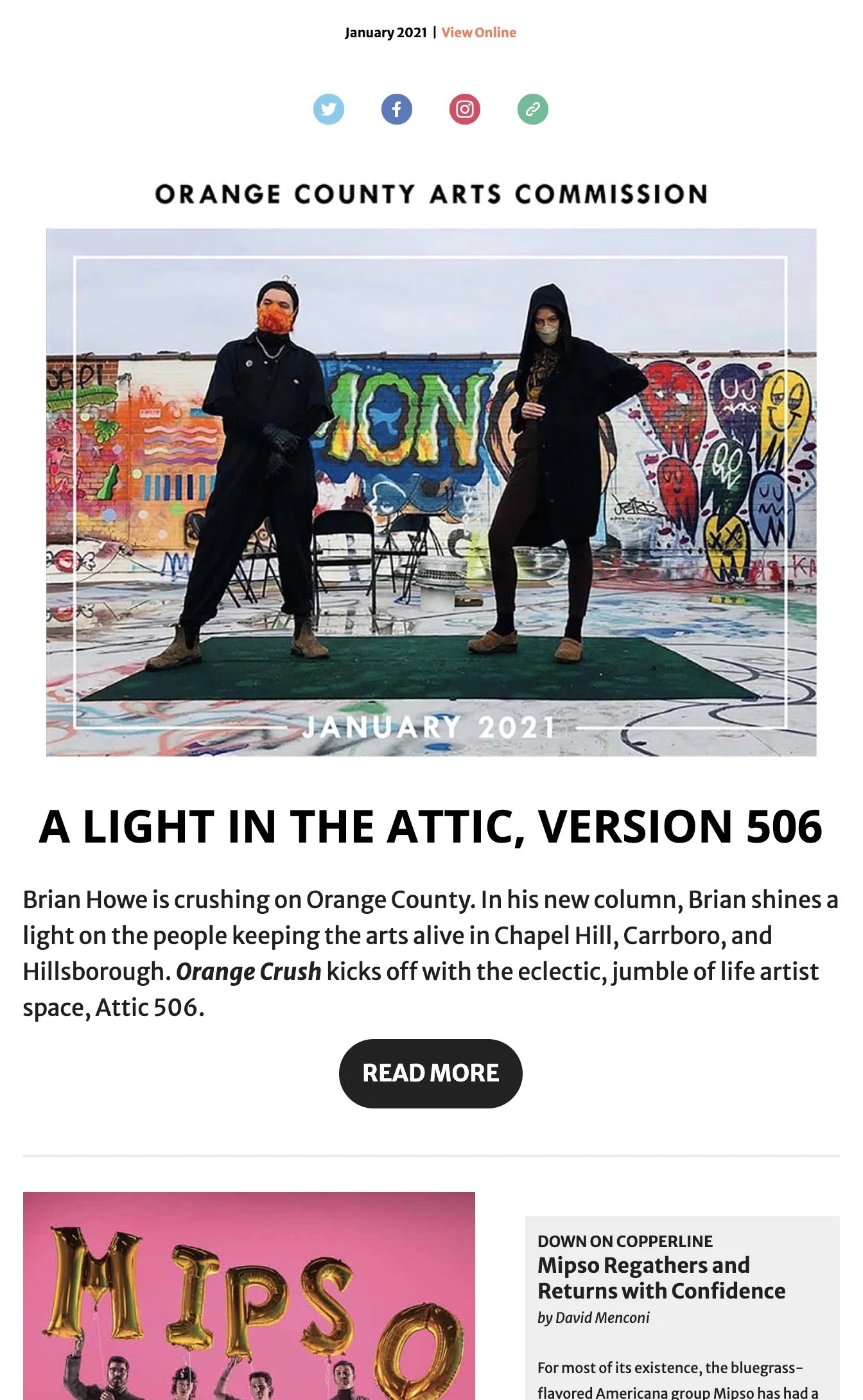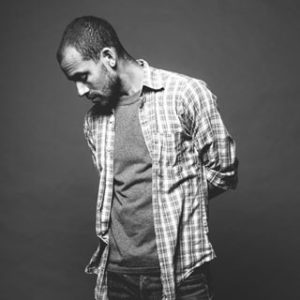
Sean T. Bailey’s photography exhibit Belonging opened at The ArtsCenter’s Nicholson Gallery on March 1st. On March 10th, Governor Roy Cooper declared a state of emergency in North Carolina due to COVID-19, and on March 27th, The ArtsCenter joined businesses across the country in closing its doors until further notice as a safety measure during the pandemic.
Oddly prescient in topic, the photographs of Belonging examine life within the biomedical field, particularly that of underrepresented communities. The exhibit tells the stories of individuals who overcame stereotypes, socio-economic difficulties, and history to pursue advanced degrees in biomedical research. Bailey himself has a career in biomedical research, one of few individuals with feet in both analytical and creative fields. He hopes the exhibit will serve as an educational tool for the science community to foster change and promote awareness of disparities in opportunity within the biomedical field. Additionally, he hopes his own background will encourage others to explore such oscillating perceptions.
“I owe this a lot to my mother,” says Bailey of his ability to move in both scientific and creative realms. “The way she supported me, I’m just very thankful that she gave me an opportunity to explore. When I went into college, I went in to study engineering, and realized okay this is not for me, and I switched out into anthropology. Very drawn to the applied anthropology and also the physical area of studying anthropology–forensics and social structures and things like that. I found that very fascinating. And then I shifted into molecular science. So it was a shift, but it was a natural shift. My dad was a physician, so I was always intrigued by science, I just didn’t know what area of science or medicine I was going to go into.”
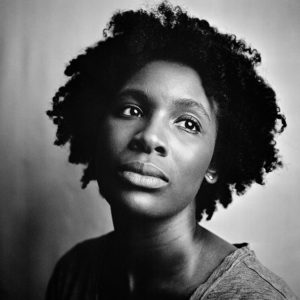
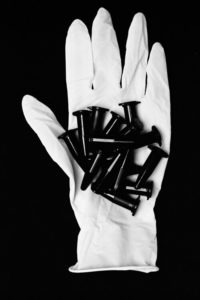
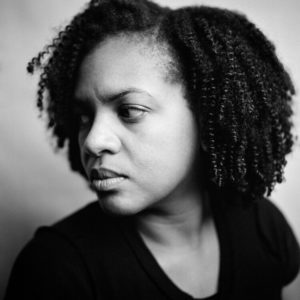
Bailey only began practicing photography upon moving to Los Angeles to start his biomedical postdoc. “My wife ended up getting me a digital camera. I found that I really enjoyed the process of just documenting things that I see, but also drawn to portraiture and fashion work when we moved to Los Angeles.” Pre-photography, Bailey had mostly done a lot of charcoal drawing and sketching with graphite. Given the focus in shading and texture inherent in charcoal and graphite work, it’s not surprising that Bailey transitioned from digital photography to film. “Digitally, I found it interesting,” he explains, “but it just wasn’t tangible enough for me. And that’s when I went into the film world and started to realize–you have to think a little bit more, but I like the aspect that a lot of things can go wrong from the time you have that conception to the time you actually have the physical print. That’s what I like, there’s so many risks involved, and it’s a very tangible adventure from start to finish.”
How then does a scientist approach photography? Bailey explains that it’s been a process of learning how to move between modes of thinking, between procedure and creativity. “There’s a constant tug-o-war in my brain for wanting to be technical and wanting to be free. And that is a challenge I battle with every day I go to print. Sometimes it’s wanting to have that freedom, to say I don’t really care what happens when I’m in here, I want to experiment. And you would think being a scientist I’d like to experiment, trouble-shoot all these things, and yes that’s true, but it’s from a very technical perspective for me. Maybe it’s an innate part of me that I do like these technical things. That’s how I approach my work–my photography, my art.”
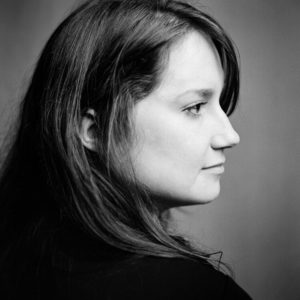 The photographs of Belonging are in striking black and white. Intimate, large, head-shot portraits of biomedical researchers are juxtaposed with still-lifes of carefully arranged gloves, test-tubes, vials, and other medical research equipment. In the still-lifes, the objects are isolated in surrounding black. In the portraits, the slightly grainy black and white allows you to feel the texture of the researchers’ skin, their lips, their hair. These are people, those are objects, and you are not to conflate the two. Bailey describes the individuals in the portraits as “brilliant, overcoming adversities, and pushing the boundaries of science.” One can’t help but think of them now, lonely in the dark in the closed gallery. “They’re just sitting there,” says Bailey.
The photographs of Belonging are in striking black and white. Intimate, large, head-shot portraits of biomedical researchers are juxtaposed with still-lifes of carefully arranged gloves, test-tubes, vials, and other medical research equipment. In the still-lifes, the objects are isolated in surrounding black. In the portraits, the slightly grainy black and white allows you to feel the texture of the researchers’ skin, their lips, their hair. These are people, those are objects, and you are not to conflate the two. Bailey describes the individuals in the portraits as “brilliant, overcoming adversities, and pushing the boundaries of science.” One can’t help but think of them now, lonely in the dark in the closed gallery. “They’re just sitting there,” says Bailey.
Since The ArtsCenter’s closure, the exhibit has been moved online. You can find all the images from Belonging on view at The ArtsCenter and Bailey’s websites. Still, an online gallery web browse is quite a different animal from an in-person gallery experience, and Bailey had carefully curated the exhibit to be an immersive in-person experience.
“Dan [Executive Director of The ArtsCenter] and I at The ArtsCenter, we talked about size [of the photographs and frames]. I said I want people to feel like they are talking to these people, that they’re looking into these people when they’re reading these narratives. Everything was thought out. Everything had a purpose. Every single thing, down to the gallery labels on expired x-ray film. The material that encases those photographs. The physical notebook that looked like a science lab notebook,” explains Bailey.
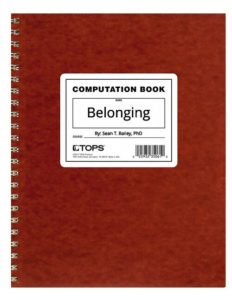 Presentation of the exhibit was all geared towards creating a sense of intimacy between the people in the portraits and the gallery visitors, creating connection between the public and the biomedical field. Bailey stated that he wished for a visit to the exhibit to be full of atmosphere, like the enveloping sense of scene one finds when dining at a fine restaurant. “I thought I have to go in 110%, I can’t leave anything on the table.” Visitors to Belonging were to be given a science lab notebook, filled with the researchers’ narratives, which they could then carry, hold, and explore while visiting the portraits.
Presentation of the exhibit was all geared towards creating a sense of intimacy between the people in the portraits and the gallery visitors, creating connection between the public and the biomedical field. Bailey stated that he wished for a visit to the exhibit to be full of atmosphere, like the enveloping sense of scene one finds when dining at a fine restaurant. “I thought I have to go in 110%, I can’t leave anything on the table.” Visitors to Belonging were to be given a science lab notebook, filled with the researchers’ narratives, which they could then carry, hold, and explore while visiting the portraits.
Of the in-person gallery’s COVID-19 closing, Bailey says “I mean it is what it is. And it’s been a hard thing to really try to, to accept. And it’s not just me, it’s everyone going through something. And not to be selfish and just be thankful.”
Sean has generously pledged a portion of any photography sales he has over the next several months to the Orange County Arts Support Fund. Learn more about his offer and the support fund here.
Learn more about Sean T. Bailey and see more of his artwork at his website, and visit the virtual Belonging exhibition at The ArtsCenter online. Follow him on social media for regular updates and previews of his work at @something_brilliant.
